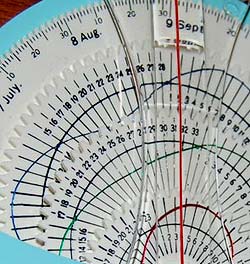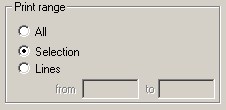I sent a friend an email with an attached Zip file. It bounced, with a message from “System Administrator” that read
Your message did not reach some or all of the intended recipients.
Subject: xxxxxxxxxxxxxxxx
The following recipient(s) could not be reached: xxxxxxxxxxxxxxx …
552 5.7.0 review our attachment guidelines. u14sm9443132gvf.20
I figured maybe the note is from my friend’s system – maybe the file was too large? So I resent it to him to another mail address, with the same outcome. Then it occurred to me to mail the file to myself… long story short, eventually I went to the source of all wisdom – ironically, Google – and discovered that Google Mail, through which I was sending, has a policy forbidding any zip file that contains an executable (which my attachment, quite lawfully, did).
So I sent the file via yousendit, and that was that. But it did occur to me that I would’ve saved a lot of time had Google Mail elected to phrase their bounce message in human-friendly informative terms, such as:
Your message did not reach some or all of the intended recipients.
– – –
It was blocked by GMail’l outgoing mail server, because it has a zip attachment containing an executable file. GMail does not allow this. For more info, see http://…..
Not as succinct as u14sm9443132gvf.20, but rather more useful, don’t you think?
 Just posted a new article on my History of Computing site: Biorhythmic calculators.
Just posted a new article on my History of Computing site: Biorhythmic calculators.
I have three of these wondrous devices, mechanical servants to a debunked theory. They use three different design approaches to achieve the same goal, and their mechanisms are therefore composed of the same functional components implemented in completely different ways.
Go take a look!
I’ve blogged before about headup, Semantinet’s semantic search add-on for Firefox. Well, the creative folks at Semantinet are forever doing new things (one reason I like working there, despite the traffic jams between Jerusalem and Herzliya :-), and the latest is the headup publisher’s widget.
This tool uses the same semantic search technology in a much lighter package. It is intended for bloggers and news sites, who can use it to integrate the ability to bring in additional information about entities it recognizes – places, people, companies, books, bands, and the like – into their pages without any need for the user to install anything. The tool simply adds slight dotted-blue underlines under words it recognizes, and if you mouse over these and click the icon that appears you get a compact pop-up that brings you basic summary information, photos, videos and news items about the entity you clicked – whether it be Paris, Barack Obama, IBM, Haifa, or Roberta Flack.
So – since this tool is so easy to integrate in a blog (one line of code, that’s all!) I went ahead and put it into this post. Check it out, and give us feedback in the comments: is this useful to you as a reader? How can it be improved? Your comments are welcome – and can influence the course of this new product’s evolution!
The other day I noticed a car whose side mirror had recently undergone some major trauma, losing its mirror and outer casing, ignominiously showing its guts. Here:

These electrically-operated mirrors are now ubiquitous, but this brought home the complexity of their inner mechanism, with the wiring, motors, pivots and the chassis that everything must screw onto.
 Which made me think for a moment of how far forward – or is it backward? – we’ve come from the days of the simple mirrors still seen on vintage cars, as in the photo at right. In the fifties, a mirror was just that – a round sheet of silvered glass fixed in a round metal plate that pivoted on an arm. That was all – 4-5 parts, max, all externally visible. No innards at all. And cheaper to replace, I’m sure, than the bill the owner of the car in the first photo will face.
Which made me think for a moment of how far forward – or is it backward? – we’ve come from the days of the simple mirrors still seen on vintage cars, as in the photo at right. In the fifties, a mirror was just that – a round sheet of silvered glass fixed in a round metal plate that pivoted on an arm. That was all – 4-5 parts, max, all externally visible. No innards at all. And cheaper to replace, I’m sure, than the bill the owner of the car in the first photo will face.
This growth in complexity is seen in all parts of our cars and other products. So speak up – is this trend a Good Thing (it is really comfy to move the mirror from inside the car, to be sure) or Bad (loss of elegance in design, for one thing)?
Photo courtesy Glen Edelson, shared on flickr under CC license.
 I needed hard copy of a paragraph from a long text document, so I opened it in my trusty old editor (Programmer’s File Editor by Alan Phillips, a powerful freeware editor I use in lieu of the pitifully rudimentary Windows Notepad). I selected the paragraph and opened the Print dialog, recalling that there was an option to only print the selection. The option was there, a radio button sandwiched between those for All and Lines from ___ to ___ . I moved to click it – and realized it was already selected for me.
I needed hard copy of a paragraph from a long text document, so I opened it in my trusty old editor (Programmer’s File Editor by Alan Phillips, a powerful freeware editor I use in lieu of the pitifully rudimentary Windows Notepad). I selected the paragraph and opened the Print dialog, recalling that there was an option to only print the selection. The option was there, a radio button sandwiched between those for All and Lines from ___ to ___ . I moved to click it – and realized it was already selected for me.
This is far from a big deal, but I really liked the thoughtfulness that Mr. Phillips had put into this feature. The editor saw I had selected a piece of text; it stood to reason that I wanted to print that text, and not the full document. Features where the computer tries to read the user’s mind can lead at times to unexpected clashes of will, but this one was all goodness.
And compare it to the behavior, in the same situation, of Microsoft Word: you can print a selection, but if you forget to click the radio button you end up sending 50 pages to the printer. Happened to me many times…
 Just posted a new article on my History of Computing site:
Just posted a new article on my History of Computing site: 
 Which made me think for a moment of how far forward – or is it backward? – we’ve come from the days of the simple mirrors still seen on vintage cars, as in the photo at right. In the fifties, a mirror was just that – a round sheet of silvered glass fixed in a round metal plate that pivoted on an arm. That was all – 4-5 parts, max, all externally visible. No innards at all. And cheaper to replace, I’m sure, than the bill the owner of the car in the first photo will face.
Which made me think for a moment of how far forward – or is it backward? – we’ve come from the days of the simple mirrors still seen on vintage cars, as in the photo at right. In the fifties, a mirror was just that – a round sheet of silvered glass fixed in a round metal plate that pivoted on an arm. That was all – 4-5 parts, max, all externally visible. No innards at all. And cheaper to replace, I’m sure, than the bill the owner of the car in the first photo will face. I needed hard copy of a paragraph from a long text document, so I opened it in my trusty old editor (
I needed hard copy of a paragraph from a long text document, so I opened it in my trusty old editor (

And another On/Off power switch symbol!
We’ve seen much diversity of On/Off Power switch symbols here and here… and there’s more.